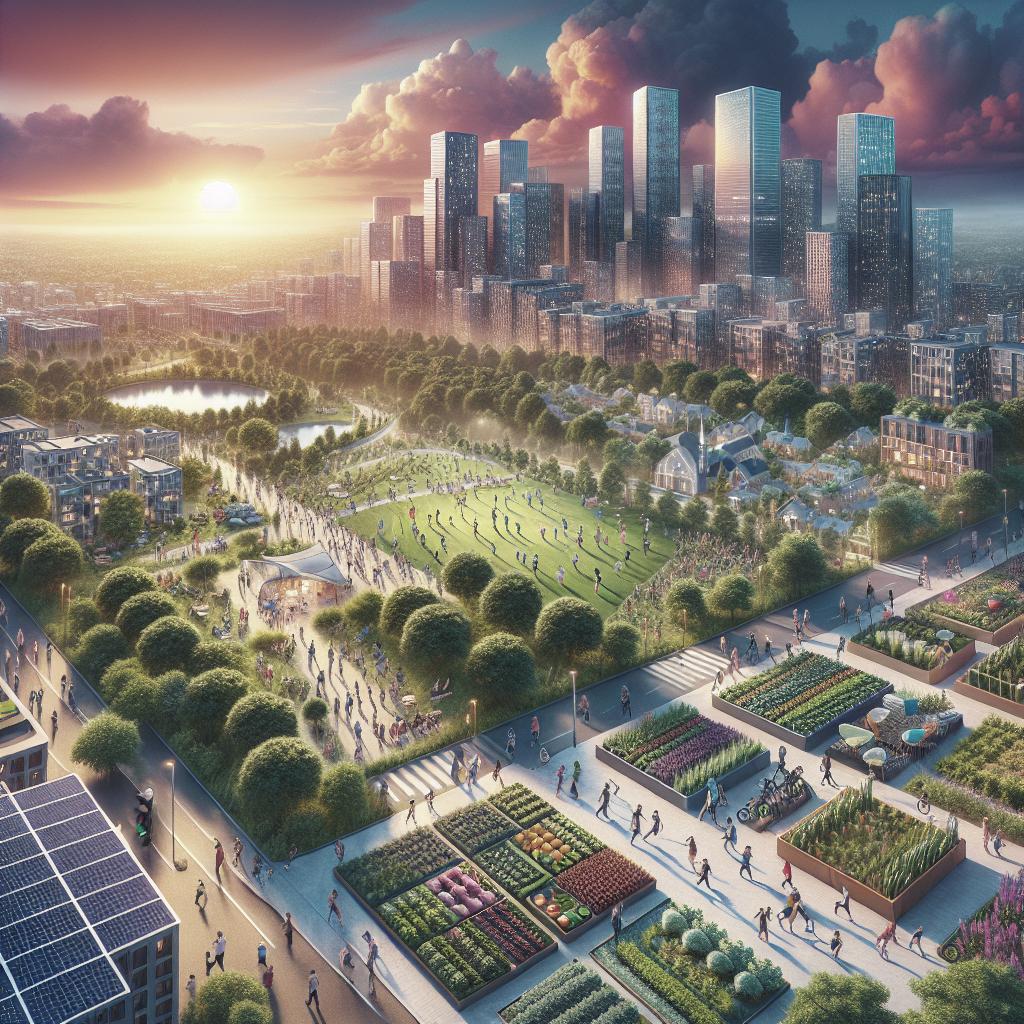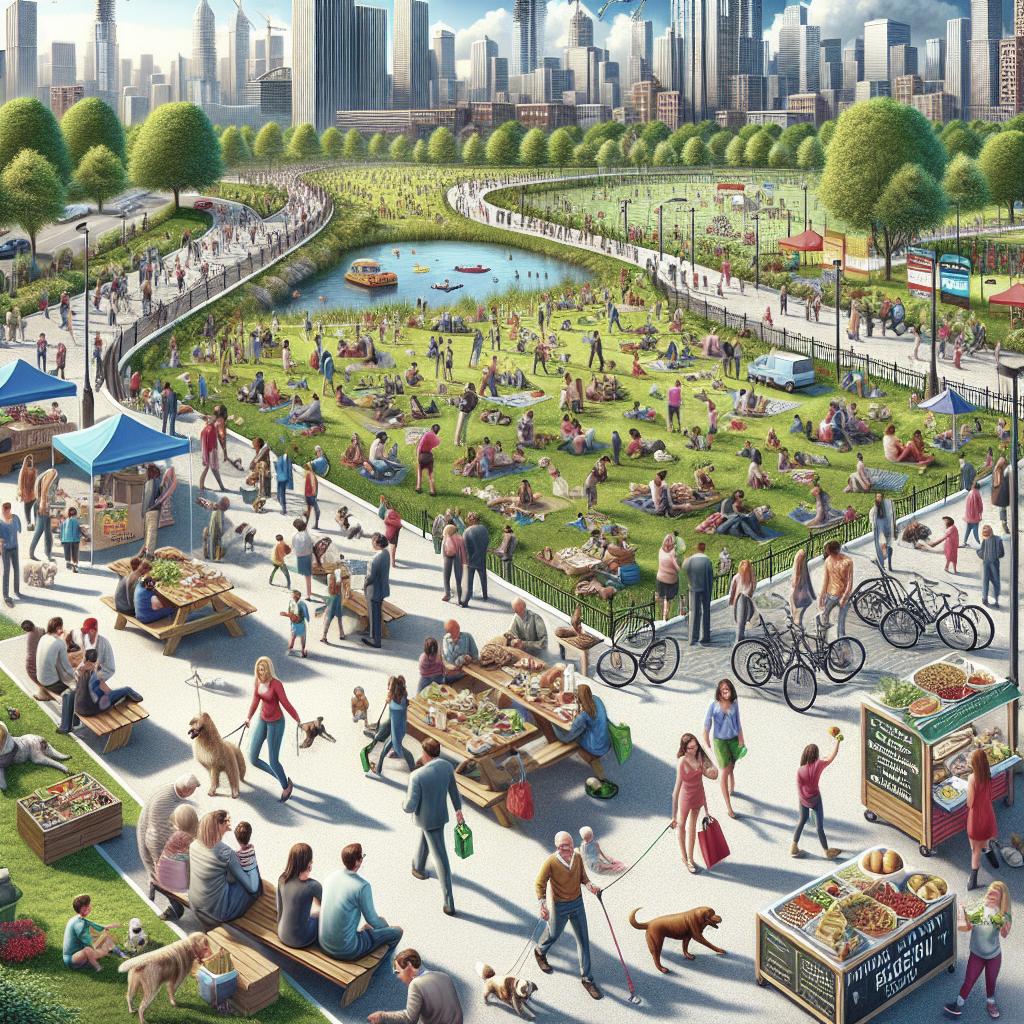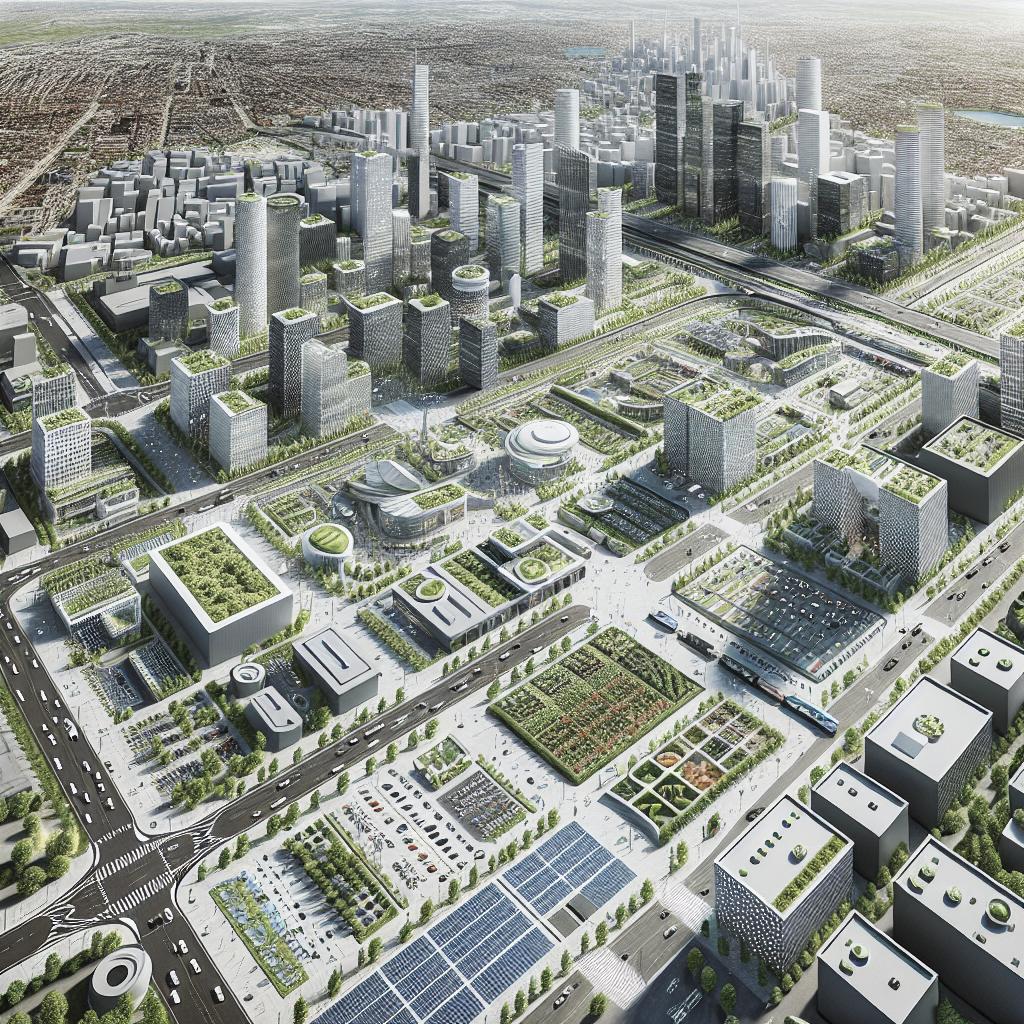<>
When it comes to designing urban spaces that promote health and wellness, a mindful approach that considers physical, mental, and emotional wellbeing is crucial. From ensuring accessibility to integrating biophilic design principles, urban planners and interior designers have the power to shape environments that enhance the quality of life. This blog post delves into various elements of wellness design, including health and fitness, safety and security, and functionality and comfort. We’ll explore how these concepts translate into actual features in urban spaces, such as the use of organic materials, active design principles, and multi-sensory experiences, to create holistic and health-promoting environments.
A Basic Introduction to Interior Design for Wellness
Urban spaces today face multiple challenges, ranging from overcrowding to pollution. As cities grow, the importance of designing spaces that promote health and wellness becomes imperative. The concept of wellness design revolves around creating environments that enhance both physical and mental wellbeing, affecting everything from the air we breathe to the materials we touch. By leveraging science and aesthetics, wellness design aims to make our lives healthier and more satisfying. Designing for wellness isn’t just about aesthetics; it also has significant social, economic, and environmental impacts. Integrating wellness principles into urban design can reduce healthcare costs, boost community engagement, and contribute to the sustainability of our planet. Through thoughtful design, we can create spaces that not only look good but also feel good, providing a sanctuary from the hustle and bustle of urban life.
What are Wellness Design Services?
Wellness design services encompass a comprehensive approach that integrates various aspects of human health into design practices. These services aim to improve both the physical and emotional wellbeing of inhabitants through creative, functional, and sustainable solutions. While traditional design focuses on aesthetic and functional aspects, wellness design goes a step further to incorporate health-promoting features.
Health and Fitness
Incorporating elements that encourage physical activity is a cornerstone of wellness design. This can include features like walkable pathways, in-building gyms, and recreational areas readily accessible to the urban populace. The idea is to make it easier for residents to integrate physical activity into their daily routines, ultimately improving their general fitness levels and reducing obesity rates. Workspaces designed to encourage movement, such as sit-stand desks and ergonomic furniture, also contribute to a healthier lifestyle. These environments not only enhance physical health but also boost productivity and morale, creating a healthier, happier workforce.
Safety and Security
Safety and security are fundamental components of wellness design. Urban spaces need to be designed to minimize risks and ensure the safety of their inhabitants. This includes integrating well-lit pathways, secure entrances, and advanced surveillance systems to create a sense of security among residents. Moreover, designing spaces that are resilient to local hazards, such as flooding or earthquakes, can also contribute to overall wellbeing. This proactive approach ensures that individuals feel safe and secure in their environments, which is crucial for mental health.
Accessibility
An inclusive urban space is one that is accessible to individuals of all ages and abilities. Designing for accessibility means considering not just physical accessibility but also sensory and cognitive inclusiveness. This can include ramps, tactile surfaces, and easy-to-read signage to ensure everyone can navigate the environment comfortably and safely. Accessible design enhances the independence and dignity of those with disabilities, enabling them to participate fully in social, economic, and cultural life. By prioritizing inclusivity, urban spaces can become more equitable and welcoming for all members of society.
Functionality
Designing functional spaces means creating environments that meet the daily needs of their inhabitants efficiently. This includes thoughtful layouts, adequate storage, and multipurpose spaces that can adapt to various activities. Functional design enhances the ease and convenience of everyday tasks, thereby improving quality of life. Moreover, functionality goes hand-in-hand with sustainability. Energy-efficient systems, waste reduction measures, and water-saving fixtures can all contribute to a more sustainable and healthy urban environment.
Comfort and Joy
Achieving comfort and joy in design involves creating spaces that evoke positive emotions and well-being. This can be attained through the use of natural materials, comfortable furnishings, and aesthetically pleasing elements like artwork and greenery. These features can significantly impact mood and overall mental health. Comfort and joy also extend to creating a sense of community and belonging. Shared spaces, communal gardens, and interactive public art can foster social connections and bring joy to residents, enhancing their overall sense of wellbeing.
Health and Fitness in Healthy Building Design and Interiors
Incorporating health and fitness into building design promotes active lifestyles and reduces sedentary behaviors. Urban design initiatives like bike lanes, pedestrian pathways, and public parks encourage physical activity and make exercise more accessible and enjoyable for residents. In interiors, features such as gym facilities, yoga studios, and spaces for meditation contribute to residents’ physical and mental health. Additionally, integrating natural elements like indoor plants can improve air quality, reduce stress, and create a tranquil environment that supports overall wellbeing.
Healthy Living Habits
Design can also inspire healthier living habits by providing access to nutritional resources. Community gardens, farmers’ markets, and spaces for cooking classes can encourage healthier eating habits. Moreover, educational initiatives integrated into design, such as informational kiosks about nutrition and exercise, can reinforce healthy lifestyle choices. By making healthy choices more accessible and integrating beneficial resources into urban spaces, designers can significantly impact public health and encourage more sustainable living habits.
Safety and Security in Wellness Architecture
Safety and security are paramount when it comes to promoting wellness through design. Features like well-lit streets, secure building access, and intelligent surveillance systems create environments where residents feel safe. This sense of security is vital for mental wellbeing and encourages outdoor activities, contributing to physical health. Designing for resilience also plays a critical role in safety and security. Buildings that are designed to withstand natural disasters or adverse conditions can prevent accidents and reduce the mental stress associated with these events. This proactive approach is essential for creating durable, safer urban environments.
Accessibility in Mindful Design of Interiors
Designing urban spaces that are accessible to everyone is a key element of wellness design. This means considering the full range of human diversity, including physical, sensory, and cognitive abilities. Accessibility is not just about meeting regulatory requirements; it’s about creating environments where everyone feels welcome and able to navigate freely. Ramps, elevators, tactile paving, and clear signage are just a few features that enhance accessibility. Additionally, thoughtful design can also include accessible seating areas, universally designed restrooms, and adaptive technologies that cater to a wider range of needs.
Functionality as a Feature of Wellness Design
Functionality is a cornerstone of wellness design, directly impacting the ease and efficiency of day-to-day living. This includes everything from intuitive layouts that reduce clutter and ease navigation to integrated technological systems that improve convenience and safety. Functional design contributes to a smoother, more stress-free experience of navigating urban spaces. It’s also essential that functional design aligns with sustainable practices. Energy-efficient lighting, optimized HVAC systems, and the inclusion of renewable energy sources are just a few ways functionality can meet sustainability, ultimately promoting a healthier lifestyle for residents.
Comfort and Joy in Wellbeing Design
Comfort and joy are inseparable from the broader goals of wellness design. By focusing on elements that evoke happiness and relaxation—such as comfortable seating, ambient lighting, and soothing colors—designers can create spaces that nurture mental health and well-being. Urban spaces that encourage social interaction, such as communal gardens and interactive installations, also play a crucial role in fostering a sense of community and personal happiness. These elements add not just functionality but also emotional uplifting, creating a sense of belonging and joy in urban environments.
Organic Interiors and Healthy Materials
Using organic materials and eco-friendly finishes can drastically improve indoor air quality and reduce exposure to harmful chemicals. Sustainable materials like bamboo, reclaimed wood, and VOC-free paints not only look appealing but also contribute to a healthier living environment. Additionally, incorporating natural textiles and furnishings can create a warm, inviting atmosphere. Materials that are free from toxins and allergens help create healthier indoor spaces and promote overall well-being.
Active Design Interiors and Human-Centric Design
Active design promotes physical activity through strategic planning and layout. Elements such as staircases that are prominently positioned and aesthetically pleasing encourage their use over elevators. Human-centric design, on the other hand, focuses on the needs and behaviors of the people using the space. Such designs aim to increase physical activity and enhance productivity and creativity. Ergonomic furniture, adjustable workstations, and layouts that foster movement and interaction are some of the ways active design can be incorporated into urban interiors.
Biophilic Design and Natural Light in Interiors
Biophilic design reconnects urban environments with nature, integrating natural elements like plants, water, and natural light to improve wellbeing. Large windows, skylights, and glass walls can flood interiors with natural light, reducing the need for artificial lighting and boosting mood and productivity. Indoor plants and green walls also play a role in purifying air and providing a calming presence. The sound of water features and the presence of natural textures can also create a serene environment that promotes mental health and relaxation.
Multi-Sensory Design for Wellbeing
Multi-sensory design addresses how different sensory experiences can enhance well-being. This includes not just the visual elements but also auditory, tactile, and olfactory stimuli. For example, soundscapes with nature sounds can create a relaxing atmosphere, while textured surfaces can provide a soothing tactile experience. Incorporating scents through diffusers or natural elements like flowers can also positively impact mood and cognitive function. By stimulating multiple senses, designers can create enriching, immersive environments that promote holistic wellbeing.
Final Thoughts
Designing urban spaces with health and wellness in mind is more critical than ever. By integrating principles of health, safety, accessibility, functionality, and comfort, designers can create environments that promote holistic well-being. Urban planners, architects, and interior designers must work together to ensure that our built environments are not only functional and aesthetically pleasing but also nurturing to the body and soul. Thoughtful design can positively impact our lives, making cities not just places to live, but places to thrive.
| Concept | Key Features | Impact on Wellbeing |
|---|---|---|
| Health and Fitness | Walkable pathways, gyms, ergonomic workspaces | Encourages physical activity, reduces obesity |
| Safety and Security | Well-lit pathways, secure access, resilience planning | Enhances mental well-being, allows safe outdoor activities |
| Accessibility | Ramps, tactile surfaces, clear signage | Ensures inclusivity, promotes independence |
| Functionality | Efficient layouts, multipurpose spaces, sustainability | Improves daily life convenience, reduces stress |
| Comfort and Joy | Natural materials, comfortable furnishings, social spaces | Improves mood, fosters community |
| Organic Interiors | Sustainable materials, non-toxic finishes | Improves air quality, creates a healthy environment |
| Biophilic Design | Natural light, indoor plants, water features | Boosts mood, reduces stress |
| Multi-Sensory Design | Soundscapes, textured surfaces, scents | Enhances cognitive function, promotes relaxation |


